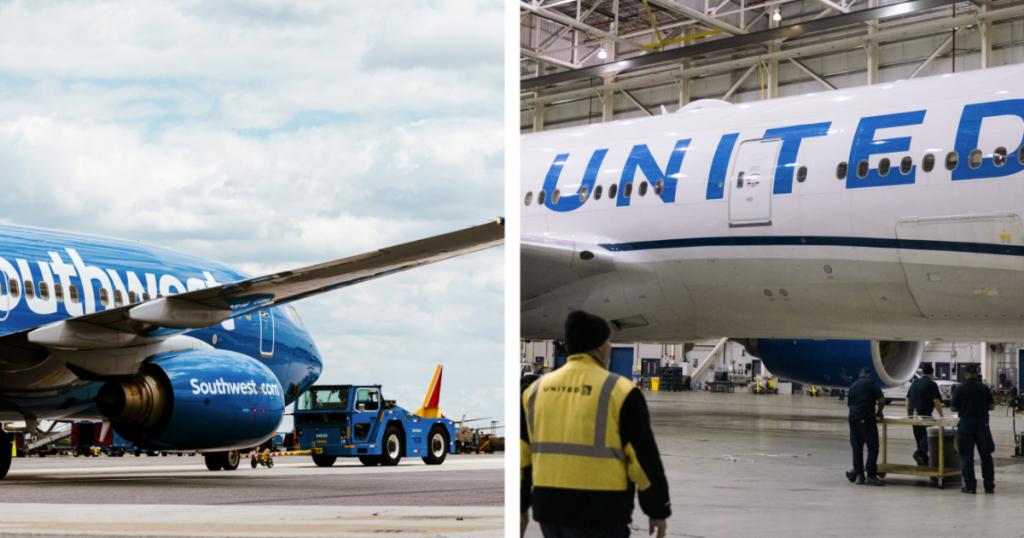- Key insights: Debit card rewards programs are becoming more popular nearly 15 years after the Durbin amendment capped debit card interchange fees.
- What’s at stake: Airlines and hotel chains are taking advantage of the banking-as-a-service model and favorable debit interchange regulations offered to bank issuers with under $10 billion in assets to make the unit economics work.
- Forward look: Expect other airlines, hotel chains and loyalty-driven businesses to also venture into debit rewards programs.
Debit card rewards programs are back, and likely here to stay.
Airlines and hotel chains are taking advantage of the
United Airlines and Southwest Airlines both in the last two weeks launched their own
The Wyndham hotel chain also has a rewards debit card that was launched in March of this year with Sunrise Banks and Galileo. The card runs on the Mastercard network.
For the airlines, debit rewards programs open up a larger swath of consumers outside the traditional credit segment.
“With more than 90% of Americans using debit cards, expanding our award-winning Rapid Rewards loyalty program to include a debit card was a natural next step,” said Tony Roach, chief customer and brand officer at Southwest Airlines, in a statement. “Whether it’s a college student looking to book a flight to watch their favorite team, a parent setting up an account for a recent graduate or a cash-savvy customer looking for another way to earn rewards, the Rapid Rewards Debit Card offers unlimited options to turn everyday spending into that next Southwest flight.”
It also serves as a complement to the airline’s existing credit rewards offerings, Richard Nunn, CEO of Mileage Plus at United Airlines, told reporters on a conference call last week. “Our goal is to have a card for every type of traveler who flies United, no matter their need,” Nunn said. “In some instances, customers may choose to have both debit and credit products in their wallet.”
Tyler Seydel, chief fintech officer at Sunrise Banks, does not expect debit rewards cards to compete with credit rewards.
“It’s not something that we think is going to compete directly with the credit cards that are, of course, in the space, but maybe be complementary to,” he said.
The card launches come at a time when brands are rethinking their approach to loyalty, Bill Kennedy, interim CEO and CFO at Galileo Financial Technologies, told American Banker.
“We’re seeing a combination now where the brands view customer loyalty as lifetime engagement, not just a transactional level spend,” Kennedy said. “You really have a value equation that looks differently than maybe it did a decade ago. And I think that’s why you’re seeing major brands like Windham and Southwest and United move into this space and recognize that long term loyalty upside.”
But the resurgence in popularity for debit rewards programs isn’t just about changing consumer habits, it also has to do with the broader economics of such programs.
Debit card rewards programs have largely gone by the wayside since 2011 because of the so-called Durbin amendment in the Dodd-Frank Act that capped
Small banks – those with less than $10 billion in assets – are exempt from the Durbin amendment, and can charge interchange fees that amount to nearly double what larger banks can charge. For example, exempt issuing banks can charge up to 46 cents per transaction, compared to 23 cents for larger banks, according to the Federal Reserve.
That equates to roughly $146 of revenue per active debit card customer per year at smaller banks, compared with $91 of revenue per active debit card customer per year, according to the 2025 Pulse Debit Card Issuer study.
“Look at a brand like Southwest. They could have gone in with any bank that they wanted to essentially with their customer base, but they ended up picking [Sunrise Banks]. This is one of those tipping points,” Rana said.
Galileo’s Kennedy expects to see more programs like these to come to market. “We’re going to continue to see the proliferation of [debit rewards programs] for the brands that actually get it,” he said. “The demand is absolutely there for the brands that have staked a loyalty claim and want to involve all of their customers.”
But the very nature of how these programs are funded limits their growth, Rana said.
“When these start taking off, they’ll start going over this $10 billion cap,” he said.

